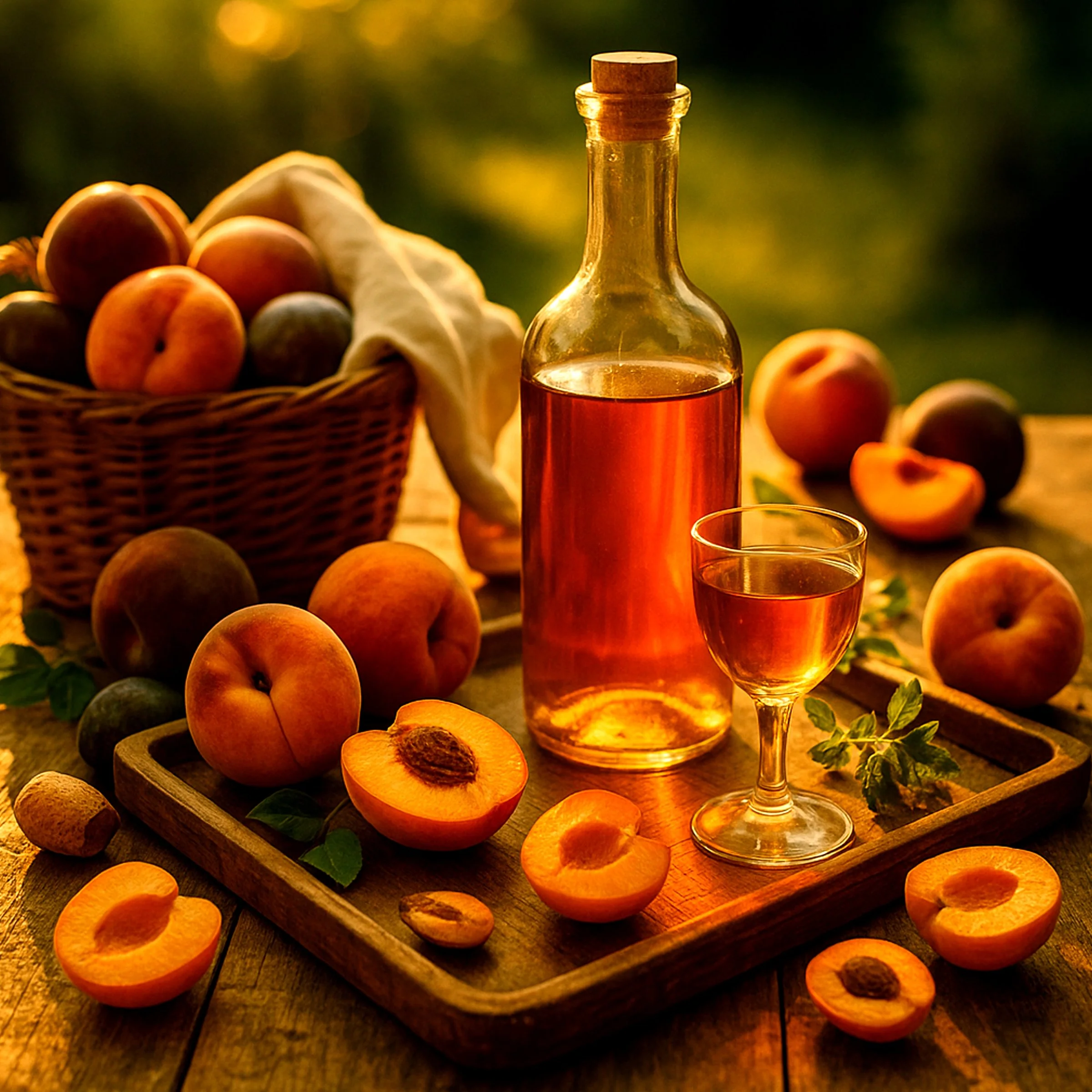FRUIT LIQUEURS
Ripe Flavor, Preserved in Spirit
Fruit liqueurs capture the essence of ripe fruit in concentrated, shelf-stable form—sweet, fragrant, and perfect for cocktails or dessert pairings. From cherry and raspberry to blackcurrant, apricot, and pear, these liqueurs vary in sweetness, texture, and intensity but share one goal: showcasing vibrant fruit flavor. Whether used as a base, a modifier, or simply sipped over ice, fruit liqueurs add lushness, color, and character across a wide range of drinks.
Key Characteristics
Made by macerating, infusing, or distilling fruit in a spirit base, then sweetening to enhance aroma and texture. Some styles are rich and jammy; others are bright, floral, or lightly acidic.
Style
Sweetened spirit made with fruit infusions, juices, or distillates
Includes crème liqueurs (e.g. crème de cassis), eau-de-vie-based liqueurs, and artisanal macerations
Body
Light to medium
Texture
Silky, smooth, sometimes syrupy or viscous depending on sugar and pectin content
Primary Ingredients
Cherry, raspberry, blackcurrant, peach, pear, plum, apricot, strawberry, apple, passionfruit, tropicals (mango, banana)
Typical Flavors
Ripe fruit, berry compote, orchard blossom, citrus zest, fruit peel, honey, subtle acidity or tartness
Origin & History
Fruit liqueurs have deep roots in both European tradition and global craft. French crèmes (like crème de cassis and crème de framboise) trace back to the 1800s, when seasonal fruit was preserved in alcohol. Central and Eastern Europe also contributed cherry and plum liqueurs, while tropical regions later developed mango, banana, and pineapple infusions. Today, fruit liqueurs span from ultra-traditional to hyper-modern, appearing in everything from high-end cocktails to casual spritzes.
How It’s Made
Ripe fruit (or juice, puree, or zest) is macerated or infused in neutral spirit or eau-de-vie. Some styles include distillation to extract pure aroma, while others rely on slow cold infusion. Sugar is added to balance and preserve. Premium styles use fresh or seasonal fruit; mass-market versions may use extracts or concentrates.
Notable Styles
Fruit liqueurs are often organized by fruit type and regional method:
Crème de Cassis / Framboise / Pêche
French berry or stone fruit liqueurs; rich and sweet
Maraschino & Cherry Liqueurs
Dry or semi-sweet cherry-based; essential in classic cocktails
Apricot & Peach Liqueurs
Smooth, floral, delicate stone fruit flavor
Pear & Apple Liqueurs
Sometimes brandy-based, often with orchard blossom notes
Tropical Fruit Liqueurs
Banana, mango, lychee, and passionfruit styles for modern mixology
Eau-de-vie Liqueurs
Blended with unaged fruit brandy for aromatic lift
Cocktail Pairings
Fruit liqueurs bring color and freshness to cocktails, often acting as a top note or sweetener in sours, spritzes, and sparkling drinks.
Classic Cocktails
Kir, El Presidente, Aviation (with maraschino), Clover Club, Jack Rose (with apple or grenadine liqueur)
Modern Mixes
Berry Spritz, Apricot Bourbon Sour, Lychee Elderflower Fizz, Peach Mezcal Smash, Mango Margarita
Food Pairings
Great with fruit-forward desserts, creamy cheeses, and dishes with stone fruit or berry sauces
With Savory
Duck with cherry glaze, pork with peach chutney, roasted squash with dried fruit, brie with pear jam
With Cheese
Camembert, aged gouda, triple cream, blue cheese with fig or berry pairing
With Dessert
Fruit tart, berry cobbler, chocolate-dipped cherries, vanilla panna cotta, lemon cake with raspberry liqueur
How to Serve It
Glassware
Small cordial or liqueur glass for sipping; coupe or flute for cocktails and spritzes
Temperature
Chilled or over ice; many fruit liqueurs are also stirred into cold drinks or shaken with citrus
Storage
Store upright and tightly sealed. Most fruit liqueurs are shelf-stable but best within 1–2 years of opening. Refrigerate cream- or juice-heavy styles after opening
Fun Fact
The classic Kir cocktail—white wine with crème de cassis—was named after Canon Félix Kir, the mayor of Dijon, who popularized the drink during WWII to promote local blackcurrant production.
Try This If You Like
Fresh fruit cocktails
Vermouth or Sangria
Sweet wines (Moscato, late-harvest Riesling)
Recommended Producers
These houses exemplify the diversity and craftsmanship of fruit- and herb-based liqueurs, offering vibrant, flavorful spirits rooted in tradition and versatility.
Chambord – Liqueur Royale
A French classic known for its opulent black raspberry liqueur enriched with Madagascar vanilla, citrus peel, and fine cognac.
Pimm’s – Gin Cup No. 1
A quintessential British liqueur blending gin, herbs, and fruit, celebrated for its refreshing role in iconic summer cocktails.
Recommended Pours
Chambord – Liqueur Royale — A luxurious French black raspberry liqueur infused with vanilla, citrus peel, and cognac, perfect for cocktails or desserts.
Pimm's - Gin Cup No. 1 — A classic British gin-based liqueur with spiced citrus and herbal notes, ideal for refreshing summer cocktails like the Pimm’s Cup.



